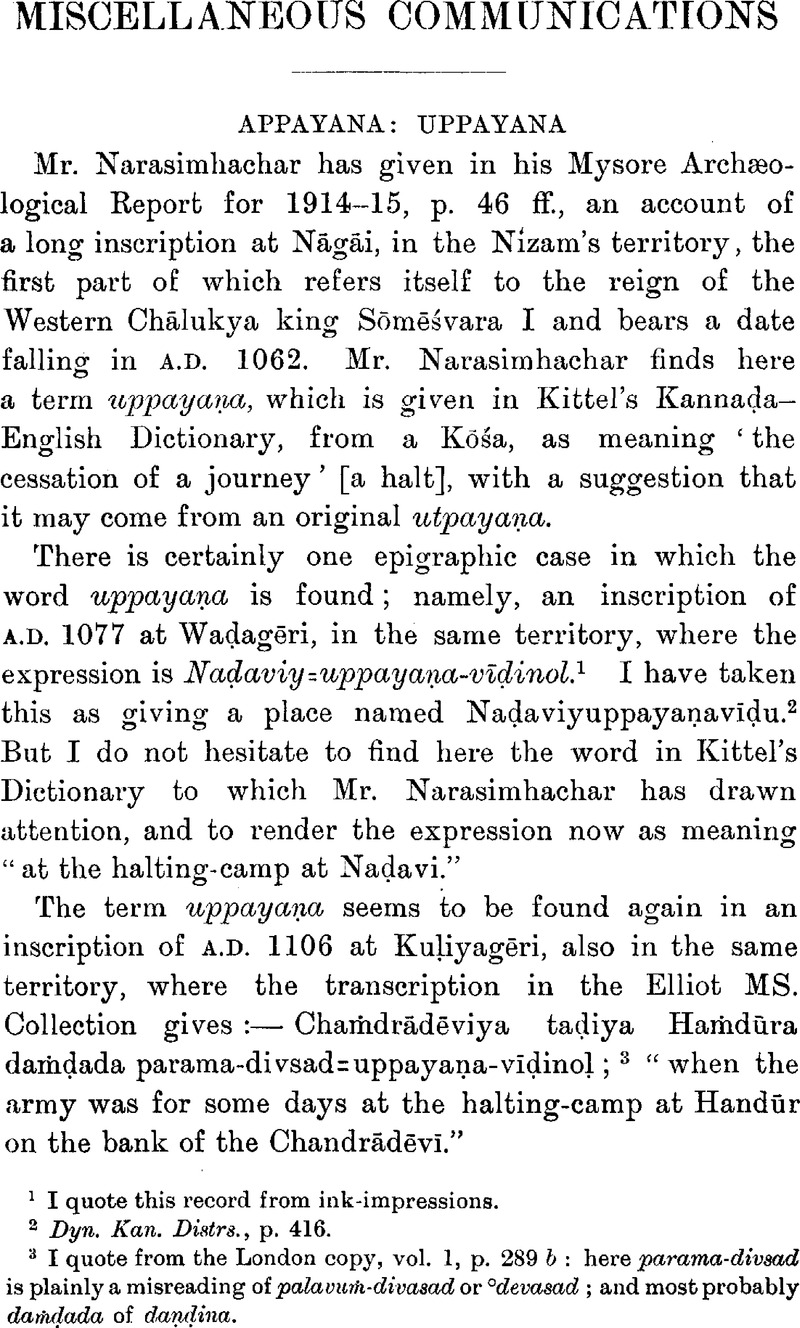No CrossRef data available.
Article contents
Abstract

- Type
- Miscellaneous Communications
- Information
- Copyright
- Copyright © The Royal Asiatic Society 1917
References
page 115 note 1 I quote this record from ink-impressions.
page 115 note 2 Dyn. Kan. Distrs., p. 416.Google Scholar
page 115 note 3 I quote from the London copy, vol. 1, p. 289 b: here parama-divsad is plainly a misreading of palavuṁ-divasad or °devasad; and most probably daṁḍada of daṇḍina.
page 116 note 1 The word is so clear in the impressions that it is difficult to think how Mr. Narasimhachar or his transcriber can have found here the form with u, instead of a, in the first syllable.
page 116 note 2 I quote this record from an ink-impression. I have given a note on it in the Ind. Ant., 1901, p. 257, where I took the name as Puḷiyap-payaṇavīḍu: this, of course, is to be corrected now; but without interfering with my identification of the place with the “Hoolybeade” of the Indian Atlas sheet 58, in the Bellary District, Madras.
page 116 note 3 See the St. Petersburg Lexicon in smaller parts, and Monier-Williams' Dictionary.


